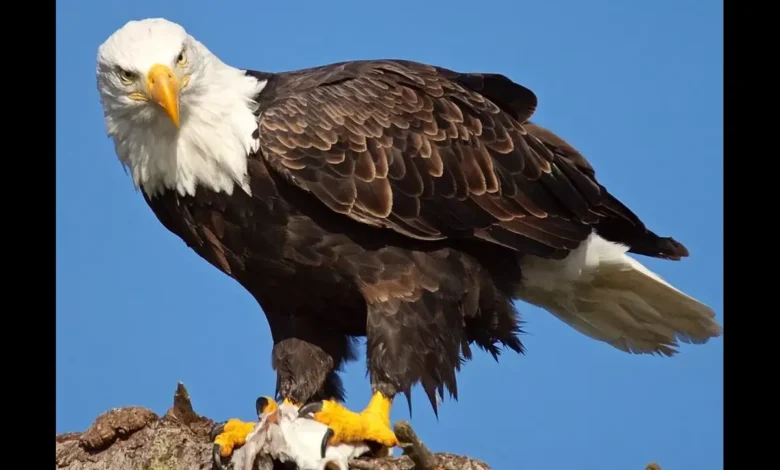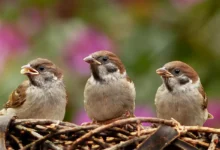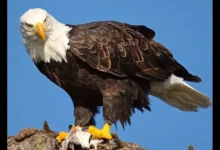Meet the Hancock Bird: A Beautiful Species Worth Learning About

Introduction to the Hancock Bird
Welcome to the fascinating world of the Hancock Bird! With its vibrant plumage and captivating behavior, this beautiful avian species is a true marvel of nature. Join us as we delve into the unique characteristics, habits, and conservation efforts dedicated to preserving the stunning Hancock Bird. Let’s spread our wings and soar into the enchanting realm of this feathered wonder!
Physical Characteristics and Habitat
Have you ever heard of the majestic Hancock Bird? Well, let me tell you about its physical characteristics and habitat. The Hancock Bird is known for its vibrant plumage, with a striking combination of blue, green, and yellow feathers that shimmer in the sunlight. Its slender body allows it to move swiftly through the dense foliage of its preferred habitat – the lush tropical rainforests.
These birds have long tails that help them balance as they soar through the treetops in search of fruits and insects to feed on. With their sharp beaks, they can easily extract seeds from pods or crack open nuts with precision. Their keen eyesight enables them to spot potential predators from afar while perched high in the canopy.
The Hancock Bird prefers to build its nests high up in the trees, where it can keep a watchful eye on its surroundings. These nests are intricately woven using twigs, leaves, and moss to provide a secure haven for their young chicks. They are highly territorial creatures that fiercely defend their nesting sites against intruders.
Spotting a Hancock Bird in its natural habitat is truly a sight to behold. Keep your eyes peeled for flashes of blue and green amidst the sea of emerald leaves – you may just catch a glimpse of these magnificent creatures soaring gracefully overhead or flitting between branches with effortless grace.
Behavior and Social Interactions
When it comes to the Hancock Bird, their behavior and social interactions are truly fascinating to observe. These birds are known for their playful and curious nature, often seen engaging in aerial acrobatics or intricate mating rituals.
They have a strong sense of community within their flock, displaying complex communication skills through various calls and displays. The Hancock Bird is highly territorial during nesting season but can be quite sociable outside of this period, forming large groups when foraging for food.
Their social hierarchy is based on age and experience, with older birds taking the lead in decision-making and guiding the younger members of the flock. Despite occasional disagreements over resources like prime nesting spots or food sources, these birds generally maintain a peaceful coexistence within their group.
Observing the behavior and social interactions of the Hancock Bird provides valuable insight into avian dynamics and reinforces the importance of cooperation in maintaining a thriving bird population.
Diet and Nesting Habits
The diet of the Hancock Bird consists mainly of seeds, berries, insects, and small fruits. These colorful creatures are known to be opportunistic feeders, often foraging on the forest floor or in shrubs for their next meal. Their diverse food choices contribute to their overall health and vitality.
When it comes to nesting habits, Hancock Birds are meticulous builders. They construct intricate nests using a combination of twigs, grasses, feathers, and other natural materials found in their habitat. The female bird plays a significant role in nest-building while the male assists by providing materials.
These birds prefer secluded areas with dense vegetation for nesting sites to ensure protection from predators and environmental elements. Once the nest is complete, the female will lay a clutch of eggs which she will diligently incubate until they hatch. The pair then work together to care for and feed their young until they flee from the nest.
Observing these birds during feeding or nesting times can provide valuable insights into their behavior and lifestyle in the wild.
Conservation Efforts for the Hancock Bird
Conservation efforts for the Hancock Bird are crucial to ensure the survival of this beautiful species. With human activities threatening their habitats, it is essential to take action to protect them. Conservation organizations work tirelessly to raise awareness and implement measures to safeguard these birds.
One key focus of conservation efforts is preserving the natural habitats where Hancock Birds reside. This includes protecting forests, wetlands, and other ecosystems that are vital for their survival. By maintaining these environments, we can help ensure a stable population of Hancock Birds for future generations to enjoy.
Another important aspect of conservation is reducing threats such as deforestation and pollution. By addressing these issues head-on, we can create a safer environment for the Hancock Bird to thrive in. Collaborating with local communities and governments is also crucial in implementing effective conservation strategies.
By coming together and taking proactive steps towards conservation, we can make a significant impact on ensuring the continued existence of the majestic Hancock Bird.
Interesting Facts and Folklore Surrounding the Species
The Hancock Bird has intrigued people for centuries with its mystical presence in folklore and legends.
One interesting fact about this species is that in some cultures, the sighting of a Hancock Bird is believed to bring good luck and prosperity to those who see it.
In ancient stories, the Hancock Bird was often depicted as a symbol of freedom and resilience, inspiring many tales of courage and determination.
Interestingly, there are various superstitions associated with the Hancock Bird, with some believing that hearing its song at dawn can ward off evil spirits.
Moreover, artists and poets have long been captivated by the beauty of the Hancock Bird, immortalizing it in paintings and verses that celebrate its grace and elegance.
The rich tapestry of facts and folklore surrounding the Hancock Bird adds an extra layer of enchantment to this already captivating species.

How to Spot a Hancock Bird in the Wild
Spotting a Hancock Bird in the wild can be an exciting challenge for bird enthusiasts. Look out for their vibrant plumage, which consists of striking shades of blue and green. Their distinct black markings on their wings make them easy to identify from afar.
To increase your chances of spotting a Hancock Bird, head to areas with dense vegetation near water sources such as rivers or wetlands. These birds are often found perched on branches overlooking the water, where they hunt for fish and insects.
Listen closely for their unique vocalizations, which consist of melodic chirps and trills that echo through the trees. Be patient and observant, as Hancock Birds are known to be agile fliers darting between trees with precision.
Bring along a pair of binoculars to get a closer look at these magnificent creatures in their natural habitat. Capture the moment if you’re lucky enough to spot one gracefully soaring through the sky or diving into the water in search of prey.
Conclusion
As we wrap up our exploration of the Hancock Bird, it’s clear that this beautiful species is truly worth learning about. From its striking physical characteristics to its fascinating behaviors and social interactions, the Hancock Bird is a remarkable creature that captivates all who have the privilege of observing it in the wild.
With conservation efforts in place to protect this unique bird and its habitat, there is hope for future generations to continue marveling at the beauty of the Hancock Bird for years to come. So next time you find yourself out in nature, keep an eye out for these magnificent birds soaring through the sky or perched gracefully on a branch – you never know when you might catch a glimpse of this extraordinary species in action. Happy birdwatching!

